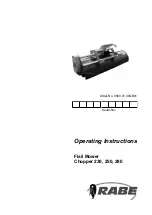
64
RTZ Lvl (Return To Zero Level)
This control adjusts the gain level to be achieved by the AGC section during lapses in audio. The
primary purpose of RTZ is to prevent the AGC from increasing the gain unnecessarily during
lapses in audio, which would result in an increase in noise level.
<-Exit
Click on this option to return to the
Adjust Processing
submenu.
Mid Band AGC
See description of settings for Low Band AGC
Pres Band AGC (Presence Band AGC)
See description of settings for Low Band AGC
High Band AGC
See description of settings for Low Band AGC
Low Band Limiter
LFLim Drv (Low Frequency Limiter Drive)
Adjusts the drive level to the individual Limiter band. Used when you desire more or less density
in a specific band. These Limiter Drive controls can also be used as secondary dynamic EQ
controls after the Drive controls in the AGC Xover.
To adjust the overall amount of density, use the Overall Limiter Drive control in the Xover
section. See “OV Lim Drv” in the
Xover (Crossover)
section on Page
62.
LFLim Att (Low Frequency Limiter Attack)
The attack control adjusts how fast the limiter responds to sudden increases in audio level, and
higher numbers equate to faster response times. Faster attack times reduce the transient nature of
the input audio, while slower attack times improve it. Extremely slow attack times must be used
with caution so as not to allow the Final Limiter stage to be overloaded during the time when the
limiter is adjusting the level downwards.
LFLim Rls (Low Frequency Limiter Release)
The release control adjusts how fast the limiter recovers from periods of more gain reduction when
the input audio levels fall. Faster release times (higher numbers) result in a more dense sound.
Even though the Omnia uses program controlled release algorithms, setting the control for
extremely fast release times while driving the limiter hard can result in ‘pumping’ as well as
extremely dense-sounding
(fatiguing) audio. Also, setting the control for extremely slow release
times (especially when combined with fast Attack times) can cause the limiter to “hang” after a
transient, failing to fully recover and “punching a hole” in its band of frequencies.
















































